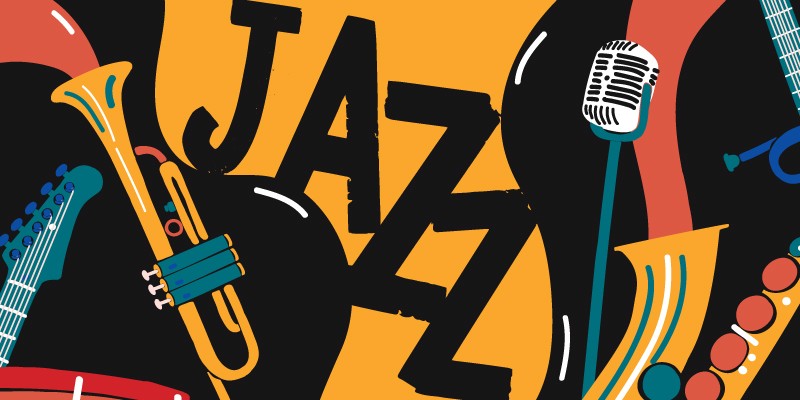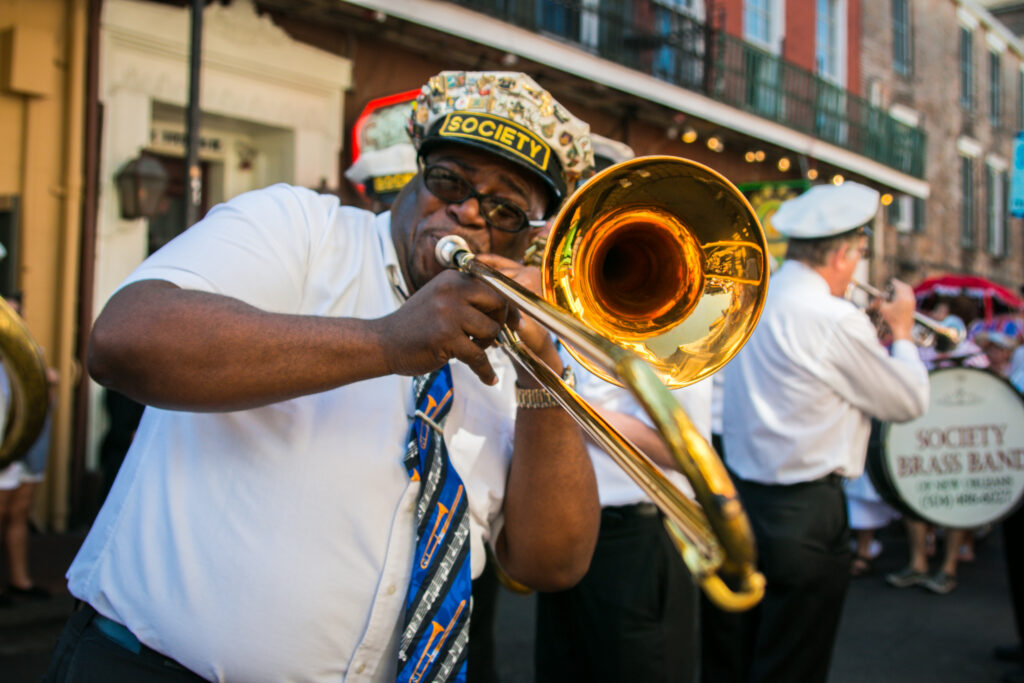JAZZ

Early in the 20th century, in the United States, jazz began to take shape. The Mississippi River’s mouth neighborhood of New Orleans was crucial to its growth. Jazz developed through time as a result of the blending of African-American musical traditions with other genres of music, including ragtime, marches, blues, and other music. Jazz was first mostly used for dance. People used to sit and listen to it in the past. After the first jazz records were created in 1917, the genre quickly gained popularity and flourished.
Jazz is a style of music that has origins in the blues and
ragtime and was created in New Orleans, Louisiana, in

the late 19th and early 20th century. African-American
communities in New Orleans, Louisiana, are where jazz began.
Jazz is distinctive because musicians may improvise while using
syncopation, call-and-response, and irregular rhythms.
Jazz music comes in a variety of styles, such as
Swing- a particular approach to interpret rhythm in which eight notes are performed in triplets to produce a galloping sound. Earlier jazz music that made extensive use of this rhythmic pattern is sometimes referred to as swing.
Bebop – Jazz music’s most well-known style was bebop. Bebop is a musical style that originated in New York and is distinguished by its quick tempos and intricate melodies. Jazz players who performed Bebop were pushing the envelope of what was possible in terms of harmony and rhythm, and this kind of jazz was intended for serious listening.
Modal jazz- Modal Jazz was based on the musical scale and had no strict chord. His kind of jazz now had a more intriguing tone. Using conflict chords and intervals. There was a sense of musical freedom throughout.

MODERN DAY/CONTEMPORARY JAZZ
Modern jazz and smooth jazz are two different types of jazz that forms into contemporary jazz.
Today’s current jazz can be extremely difficult to perform since it frequently uses illogical harmony,
complicated melodies, and unusual time signatures. Contemporary jazz sound is the first and most
noticeable way that current jazz differs from previous, more conventional jazz. Modern jazz can sound
upbeat and, to some people, quicker than previous jazz styles, which tend to sound more melodic, mellow, and calming.

